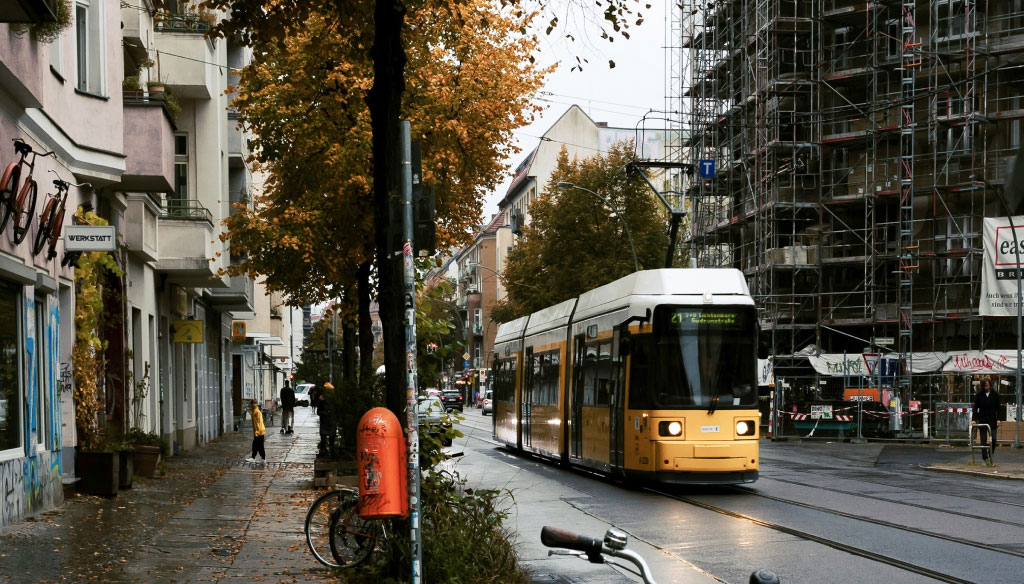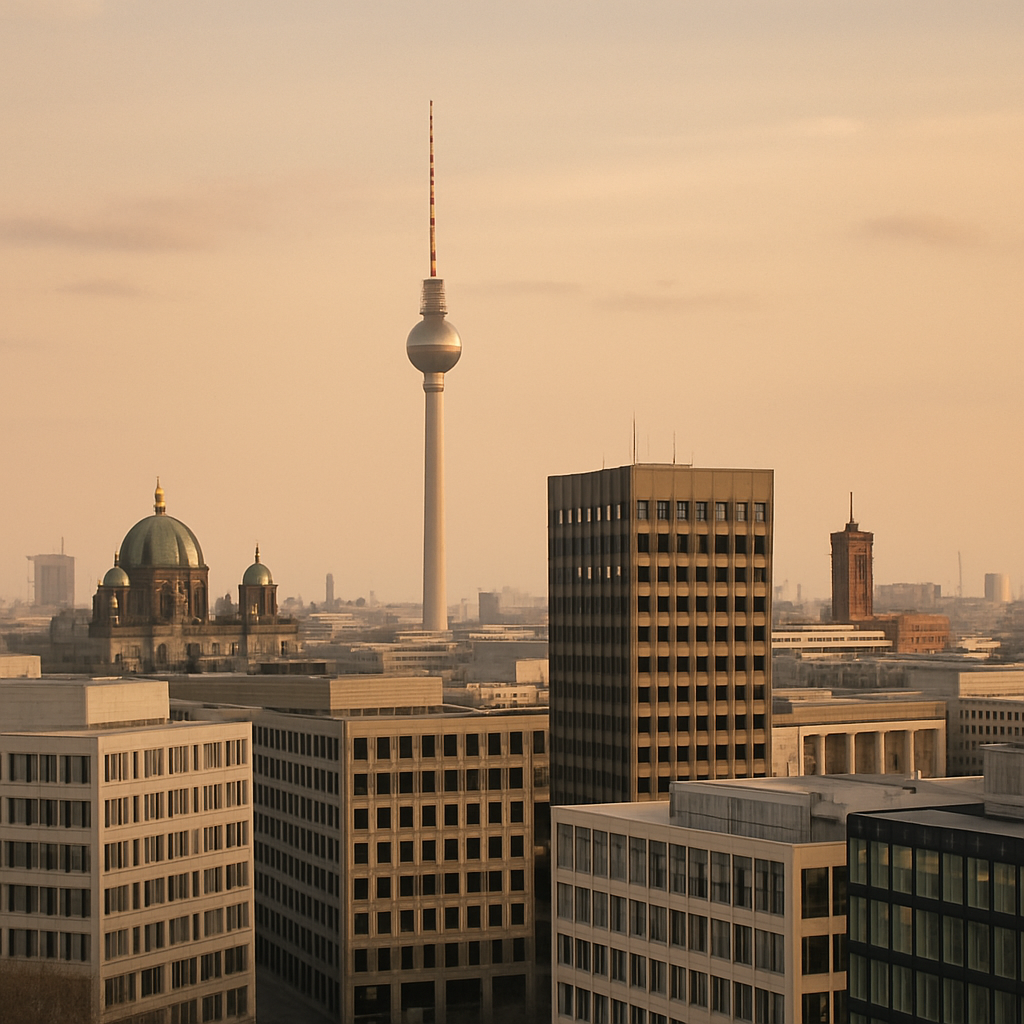
The emptier a room, the harder it is to photograph. But, it's possible! And not only that. With a few tricks, even the image of an empty room can appear lively and inviting. How this works has been explained to us by architectural and interior photographer David Burghardt. Listen to the expert!
Guiding the Viewer Through the Space
"Clearly, the goal is to show: What does the office look like? What rooms are there, where are the doors, does the space offer anything special? When it comes to conveying something, selling it, or finding someone who would like to move in, you have to show that person what they're dealing with; give them orientation in the room. What helps is the camera's perspective. Trying to capture what you see with the naked eye is unfortunately doomed to fail. Instead, walk through the room with the camera. Look through the lens and search for good motifs."
Photographing During Daylight
"Pure daylight looks very good when the sun is shining in and you can see a few sunbeams. But if the sky is overcast and you have this diffuse light, it quickly becomes muddy and gray. In this case, I would rather turn on all the lamps available. Evenings are too dark for photos. Darkness makes the room black and causes the lights to fade away. So always photograph during the day!" No Fear of Artificial Light. "Often I come into a room and think, it looks a bit boring here. Then I turn on all the lights I can find; ceiling lights, small lamps standing around, lights, even candles. So you have one light here and another spot there, a warm light here and a slightly cooler one there, and suddenly the room comes to life. If you also have one light in the front and another one further back, you bring out the depth of the room in the image."
The Floor-Ceiling Balance
"If the room is relatively high, but you still want to capture the ceiling, then you quickly tilt upwards. The result is converging lines. That is, everything becomes crooked and distorted. So: not too wide-angle, but rather straight. And if you notice that you have too much floor or too much ceiling in the picture, then in this straight perspective, try to go up or down, kneel down or stand on a chair."

Beware of Objects
"Everything directly in front of the lens will be extremely distorted. So if there's a table in the room, don't stand directly in front of the table, but keep some distance."
Motive Determines Format
"If I want to photograph a corridor and there are only walls on the left and right, but a beautiful parquet floor and a great ceiling with a chandelier, then you immediately realize that only a portrait format makes sense."
Let the Pictures Tell Stories
"It's always about information. The more information you get into the picture, the better. If you only see the tip of a chandelier, you immediately know - ah, there's a chandelier. But if the chandelier is not in the picture, it doesn't exist for the viewer. So if something sticks out somewhere, a piece of chair, a piece of table, a piece of lamp - capture it!"
Taming the Inclination to Exaggerate
"Often a room looks massively large in pictures, but when you stand in it, you think - it looked much bigger in the photo. That shouldn't happen. It's better to photograph different corners and, as in a magazine, create a big picture from individual images."
Detail and Distance
"The mix is what matters. Details in combination with whole room shots are very nice. Here you can also play with sharpness and blur, or with backlight, plants, or shadows."
Autofocus? Better Not!
"I was just recently on an observation platform. There was a woman standing right at the railing who was incredibly annoyed because the autofocus of her camera kept jumping back and forth. She wanted to photograph the landscape, but the autofocus kept jumping between the railing and the view. So it's always better to turn off autofocus and look through the camera yourself. Especially in a room."
Flash? Never!
"Never photograph a room with the flash on the camera! The flash creates extreme shadows, especially with objects. So better leave out the flash completely. If you have a good camera, you can expose for longer. The only important thing is to stop down. I recommend aperture 8 or 10, no less. This way, you have a large depth of field, just put the camera on a tripod, align it straight, and you're done."
Tripod? Yes!
"If the room is bright, if you have daylight, you can shoot handheld. But especially in autumn, when it's cloudy outside and the room gets a bit darker, a tripod is highly recommended. Then it doesn't even have to be very bright. The camera collects light. Sometimes I'm surprised myself at the beautiful photos that come out."
Camera Before Phone
"The problem is that the phone camera takes all the decisions for you. You can choose the motif, focus on something, and adjust the brightness, but with a room with windows, you will always have problems. Every camera has an exposure meter and naturally tries to photograph a balanced motif in terms of brightness. The camera doesn't know that I want to photograph a window. The result is a bright window and a black room. You have to manually counteract this. After all, I want the room to be visible. And it should be brighter. By the way, the window may also break away!"
Manual Over Automatic
"Automatic settings can quickly ruin a picture. The camera only notices that it's dark, stops down, and if it can't stop down further, it goes to 3000 ISO. It might look good on the small display, but on the monitor, you realize - oh, something went wrong there. So rather: ISO 100, tripod, stop down, and manually focus. Those are the basics."
And what does a good picture look like now? Best practice examples can be found here or here!
The Berlin photographer David Burghardt knows the photography business inside out. In 1997, his career began with an internship at GEO, followed by work as a picture editor at A&W Architektur & Wohnen, COUNTRY, and the teNeues Verlag. He also worked as a freelance picture editor for magazines such as Häuser, Living at Home, or Feinschmecker and photographed for Backjumps, the teNeues Verlag, for architects, designers, and establishments such as the Vabali Wellness Resort in Berlin. In 2013, he became self-employed. Since then, David Burghardt has been working as a freelance photographer, picture editor, and image editor with a focus on architectural and interior photography.






